|

 |
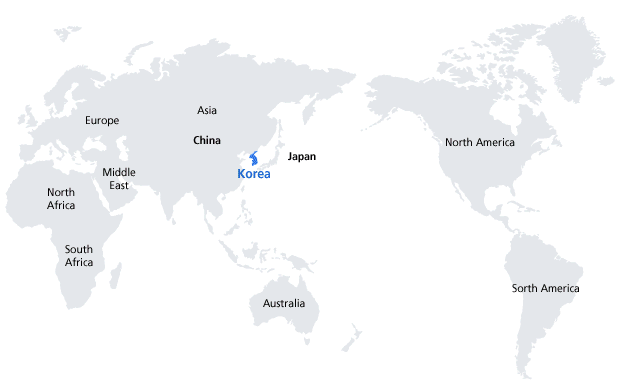 |
Korea is a country full of spirit and surprises. Following its miraculous development over the last 50 years, Korea is now a modernized vibrant nation that still maintains its traditional culture.
The Korean Peninsula is located in North-East Asia. It is bordered by the Amnok River (Yalu River) to the northwest, separating Korea from China, and the Duman River (Tumen River) to the northeast which separates Korea from both China and Russia. The country itself is flanked by the Yellow Sea to its west and the East Sea to the east. There are several notable islands that surround the peninsula including Jejudo, Ulleungdo and Dokdo. Because of its unique geographical location, Korea is a very valuable piece of land and an international hub of Asia.
Today Korea is making giant leaps towards the rest of the world to be firmly anchored on the international map.
|
 Four Distinct Seasons Four Distinct Seasons |
| Korea's climate is regarded as a continental climate from a temperate standpoint and a monsoonal climate from a precipitation standpoint. The climate of Korea is characterized by four distinct seasons: spring, summer, fall, and winter. |
Spring
Spring lasts from late March to May and is warm and sunny. Various flowers, including the picturesque cherry blossom, cover the nation's mountains and fields during this time.
Summer
Summer lasts from June to early September. It is a hot and humid time of the year. By June the average temperature is over 20°C(68°F) Monsoon rains usually begin around the end of June and last until mid-to-late July. August is hot and humid.
Autumn
Autumn lasts from September to November, and produces mild weather. October's vivid gold and vibrant reds create a colorful panorama. It is the best season to visit Korea.
Winter
Winter lasts from December to mid-March. It can be bitterly cold during this time due to the influx of cold Siberian air. Heavy snow in the northern and eastern parts of Korea makes for favorable skiing conditions. |
|
 National Flag National Flag |
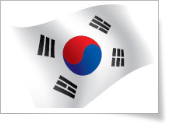 |
Korean flag is called "Taegeukgi" in Korean. Its design symbolizes the principles of the yin and yang in Oriental philosophy. The circle in the center of Korean flag is divided into two equal parts. The upper red section represents the proactive cosmic forces of the yang. Conversely, the lower blue section represents the responsive cosmic forces of the yin. The two forces together embody the concepts of continual movement, balance and harmony that characterize the sphere of infinity. The circle is surrounded by four trigrams, one in each corner. Each trigram symbolizes one of the four universal elements: heaven ( ), earth ( ), earth ( ), fire( ), fire( ), and water ( ), and water ( ). ). |
|
 National Alphabet - Hangul National Alphabet - Hangul |
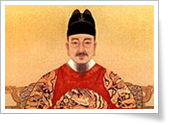 |
Hangeul was invented in 1443, during the reign of King Sejong. It is composed of 10 vowels and 14 consonants. Hangeul has 11 complex vowels, 5 glottalized sounds, and 24 basic Hangeul letters. The chart below represents the 24 Hangeul letters and their romanized equivalents. The Hunminjeongeum, a historical document which provides instructions to educate people using Hangeul, is registered with UNESCO as World Documentary Heritage. UNESCO awards a ‘King Sejong Literacy Prize', every year in memory of the inventor of Hangeul. |
|
 National Alphabet - Kimchi & Bulgogi National Alphabet - Kimchi & Bulgogi |
| A diverse array of foods and dishes can be found throughout Korea. Korea was once primarily an agricultural nation, and Koreans cultivated rice as their staple food since ancient times. These days Korean cuisine is characterized by a wide variety of wild greens and vegetables. Various fermented and preserved foods, such as kimchi (fermented spicy cabbage), jeotgal (matured seafood with salt) and doenjang (fermented soy bean paste) are notable for their unique flavor and high nutritional value. The prominent feature of a Korean table setting is that all dishes are served at the same time. |
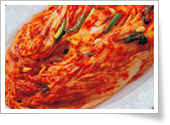 |
A diverse array of foods and dishes can be found throughout Korea. Korea was once primarily an agricultural nation, and Koreans cultivated rice as their staple food since ancient times. These days Korean cuisine is characterized by a wide variety of wild greens and vegetables. Various fermented and preserved foods, such as kimchi (fermented spicy cabbage), jeotgal (matured seafood with salt) and doenjang (fermented soy bean paste) are notable for their unique flavor and high nutritional value. The prominent feature of a Korean table setting is that all dishes are served at the same time. |
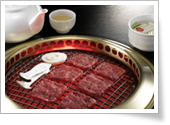 |
The word bulgogi is commonly translated as Korean barbecue, though it literally means "fire meat" as bul is "fire" or gogi is "meat". Beef is most often identified with bulgogi, but even pork, chicken, lamb, squid and octopus, for example, can be cooked bulgogi style as bulgogi, like barbecue, is a method of cooking. For the most common beef bulgogi, thin slices of meat, usually tenderloin, are marinated in a sauce made of soy sauce, sesame oil, minced garlic, sesame seeds and other seasonings, and then cooked over a charcoal grill, usually at the table. The grilled beef slices can be eaten as it is or wrapped in lettuce along with slices of fresh garlic and green pepper and a dab of soybean paste, red pepper paste, or a mixture of the two, all of which are rich in vitamins, minerals and cancer-fighting substances. |
|
Click here for more information on Korea
 |
|
|
 |
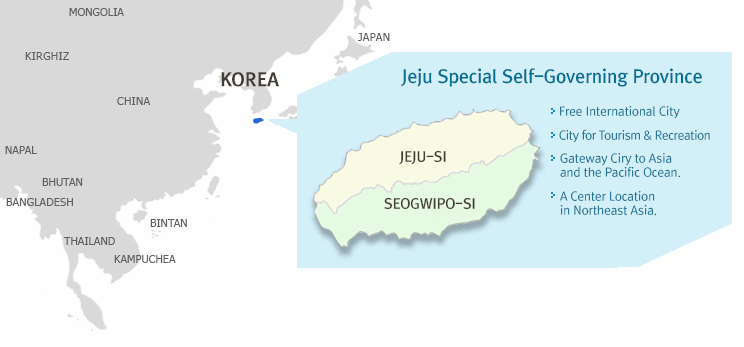 |
Jeju Island will amaze you with its beauty. The harmony of the mountains, ocean, the smaller islands, and the beautiful beaches- all unique with different sand colors and different hues of water- make Jeju an amazing travel destination. The mysteries that you will discover in Jeju are endless and every time you visit, there will be more secrets to unlock and more places to experience.
|
 |
 Samda: Three Abundance (Rocks, Wind, Women) Samda: Three Abundance (Rocks, Wind, Women) |
| "Three abundance" is a famous term that characterizes the three things which are abundant on Jeju. They are Seokda (rocks), Pungda (wind), and Yeoda (women). That's why they call Jeju Samdado: the island of three abundance. Seokda originated from the Mt. Halla volcanic activity of the past. People had to cultivate the land through a long process of clearing away the numerous rocks covering the land and then form the inlets for irrigation, then construct the walls for protection against wind. Seokda, tells of the harsh surroundings of Jeju. Jeju is located in the path of typhoons, so the islanders had to fight against the sea. The effect of Pungda and Seokda shows in Jeju life styles. Two examples are the thatched roofs of Jeju which are tied up with straw rope, and the fields surrounded by stone walls. Yeoda originated from the fact that most men of Jeju were lost at sea, which made women larger in number. Also, women had to come out to the fields with men due to the Jeju's living environment being harsh. Yeoda is a comment on population statistics, but moreover it is a metaphor for the diligent women of Jeju. The famous women-divers who fight against wild waves to catch fish are the very symbol of Jeju. |
 Sammu: Three Non - Existence (Thief, Gate, Beggar) Sammu: Three Non - Existence (Thief, Gate, Beggar) |
| Sammu is the term meaning there are no thieves, gates or beggars on Jeju. From the old days, Islanders have made "diligence, thrift, interdependence" their virtues in order to pioneer the rough and harsh surroundings. So they didn't steal or beg, which led to the condition of having no use for fences or gates. Also, all the inhabitants were the descendants of Tamna, scholars who were banished due to their great will to keep their principles. Therefore they all valued their honor highly. They also knew everything about each other, which prohibited them from doing anything bad or dishonorable. So islanders led diligent, thrifty, and interdependent lives. They didn't need barriers. They only needed to leave a long log at the entrance of their homes to let the others know that the owner was out. |
 'Dolharubang' means 'Stone Grandfather' 'Dolharubang' means 'Stone Grandfather' |
| A Dolharubang is a statue sculpted out of volcanic rock from Jeju that looks somewhat like a man or spirit guardian. Dolharubangs are found all over the island and come in all sizes, from ones that can be placed on one's desk to those larger than a human. Superstition says that touching its nose helps women give birth to a boy. So, many honeymooning couples can be seen lining up to do just so, each standing to either side to have their pictures taken with their hands on its nose. |
Click here for more information on Jeju Island
 |
|
|
|

